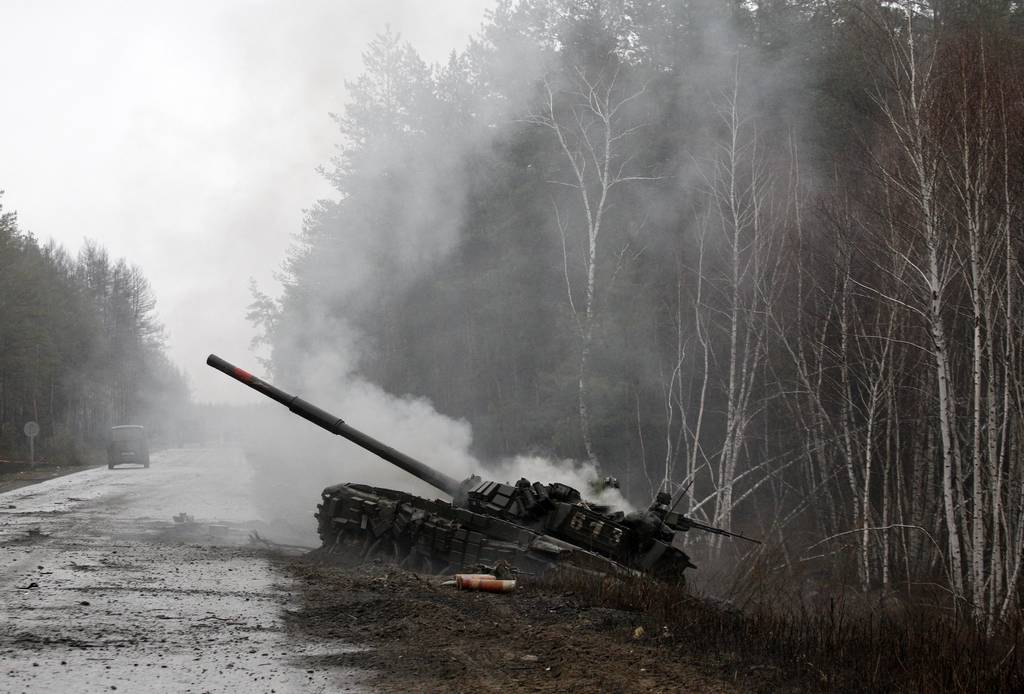NATIONAL HARBOR, Md. — The Ukrainian military is repelling attacks from numerically superior Russian forces by combining new-school inventiveness and technology with old-school tactics on the battlefield, according to one official.
While Moscow’s war machine dwarfs its neighbor, with more manpower and built-up materiel at its disposal, Kyiv has for nearly two years withstood bombardment in both the physical and digital worlds.
Maj. Gen. Borys Kremenetskyi, the defense attaché with the Embassy of Ukraine in the U.S., on Dec. 13 credited his besieged country’s endurance to an “asymmetric approach” that confronts volume and brute force with scrappiness and creativity. Hobbyist toys including first-person-view drones have been transformed into anti-armor and personnel weapons, and cellphones have become tools for detection of missiles and other overhead attacks.
“Innovation? It’s one of our advantages and our tools,” Kremenetskyi said at the Association of Old Crows conference south of Washington. “We in Ukraine do not have thousands of artillery tubes, thousands of cruise missiles.”
The U.S. and its European allies have sought to swing the balance in Ukraine’s favor, injecting billions of dollars of weapons, ammunition, combat vehicles and training into the fight. Norway on Wednesday promised to donate more National Advanced Surface-to-Air Missile Systems, or NASAMS, worth approximately $31 million.
The Pentagon, meanwhile, has committed Abrams tanks and High Mobility Artillery Rocket Systems, or HIMARS, among other high-profile and expensive technologies. Specialty unmanned aerial vehicles and jammers have also been earmarked for shipping overseas. The former has become emblematic of the Russia-Ukraine war as both sides try to spot, target and attack from relative safety.

What’s working for Ukraine is to combine this new-age weaponry with innovation and a thorough understanding of past continental conflicts, Kremenetskyi said.
“This is a type of World War I, World War II, full-scale artillery warfare — plus UAVs, unmanned surface vehicles, electronic warfare, cyber and all the domains we have now,” he said.
Ukrainian President Volodymyr Zelenskyy this week visited Washington, meeting with Pentagon officials and defense contractors in an effort to unlock additional support, namely air defenses.
Continued assistance is snagged in Congress as lawmakers debate a $61 billion supplemental package. Though Ukraine aid still enjoys majority bipartisan support in both the House and Senate, a handful of Republicans who previously voted to gird Kyiv are skeptical of appropriating additional sums of money.
“The main lesson I have from his speech is: We are going to fight,” Kremenetskyi said of Zelenskyy’s stateside address. “We do not have another plan, rather than fight. With whatever capabilities we have now, with whatever capabilities we can be provided by our partners, we are going to fight.”
Defense News reporter Bryant Harris contributed to this article.
Colin Demarest was a reporter at C4ISRNET, where he covered military networks, cyber and IT. Colin had previously covered the Department of Energy and its National Nuclear Security Administration — namely Cold War cleanup and nuclear weapons development — for a daily newspaper in South Carolina. Colin is also an award-winning photographer.








